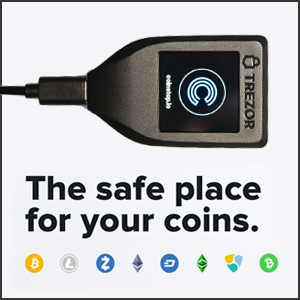Over the years, Bitcoin has turned out to be one of the most popular investment assets, finding its place among both individual and institutional investors in recent times. Due to the volatility character, along with promising returns, it poses a very important question to investors on ‘how to invest in Bitcoin long-term’. Generally, there exist two major Bitcoin investment strategies that involve either long-term holding or active trading. Each has its boons and perils, hence understanding which to take is highly critical to an investor’s goal and risk appetite.
The Philosophy Behind HODL
HODL is an acronym born out of a misspelling of the word “hold” in a Bitcoin forum post, and it has since become an investment strategy widely adopted. Investors using this approach are of the opinion that Bitcoin is long-term, so whatever changes in prices do not deter them from holding their assets. The philosophy of HODLing is cemented on grounds of expectations that its value would increase over time, with increasing adoptions and demand.
Since such investors do not trade in and out, buying and holding it for years entails the avoidance of risks associated with market timing coupled with short-term price swings. Historically, Bitcoin has exhibited significant surges in value with longer-term, extended volatility cycles. The said strategy has high appeal for Bitcoin as some kind of digital gold and believes this could act like an inflationary hedge.
Advantages and Risks of HODLing Bitcoin
A large part of why people HODL is just to reduce all the stress and complexity involved when trading frequently, meaning investors won’t have to monitor price charts every minute of the day or study market trends, nor have to make speed-of-light trades. This longer-term approach contributes to avoiding many of the significant transaction fees combined in frequent transactions and minimizes tax implications around short-term gains.
Of course, this is a very risk-intensive strategy with its downsides, including possible prolonged downturns in the Bitcoin price. It takes so much conviction and patience to hold through market corrections. Besides, one must be able to secure his or her Bitcoin from cyber threats and loss of private keys. Long-term holders are important to use hardware wallets and ensure very secure methods of storage.
The Approach of Active Trading
This involves constant buying and selling of Bitcoin, where the traders take advantage of the short-term movements in prices. Among other strategies that traders use to make profits from volatility in the markets include day trading, swing trading, and scalping. While HODL investors depend on the appreciation of prices over a long period, active traders seek profits through multiple transactions over shorter periods.
This approach, therefore, requires great insight into market trends, technical analysis, and trading tools. The informed decisions taken by successful traders are based on the use of indicators, chart patterns, and market sentiment analysis. While there is a possibility of quick profits, active trading asks for a great deal of time and effort and is not for those who believe in passive investing.
Challenges and Rewards of Active Trading
On the other hand, one of the main challenges of active trading is the enormous level of risk accompanying it. The cryptocurrency market is extremely sensitive to wide price volatility, and rapid market fluctuations can lead to huge losses. Poor decisions based on feelings and overtrading boost the losses a trader will incur. The ability to keep discipline and well-planned strategies against many problems mostly are problematic with novice traders.
Of course, where skill and experience come into play, even successful traders have managed to garner big returns off such challenges. Active trading allows one to achieve greater room for realization of profit off both bull and bear markets compared to long-term holding strategies. A trader up to speed with the goings-on within the market could respond more immediately to news and events affecting Bitcoin’s price.
How to Decide Between HODL and Active Trading
The choice of the correct strategy will depend on the investment goals of an individual, time commitment, and risk tolerance. HODLing works best for those investors who are convinced about Bitcoin’s long-term potential and have a hands-off approach. Patience and belief in Bitcoin to appreciate over time are required for this strategy. People who can handle market ups and downs, and who wait for probable profits, may consider HODLing as their best option.
Active trading, on the other hand, is suitable for those individuals with time, expertise, and the appetite for taking risks through market fluctuations. It can be quite rewarding for people proficient in technical analysis and market speculation. It is not advisable for beginners to start without previous trading experience because the risks for losses are way higher.
Securing and Managing Bitcoin Investments
Whatever investment strategy is chosen, Bitcoin security is the definitive key to long-term success. Investors will use security exchanges and wallets for safe storage. Anyone interested in investing in Bitcoin in Canada or learning how to buy Bitcoin in Canada should do due diligence in finding a reliable platform with dependable security features and good standing in terms of regulations. Keeping funds cold, using two-factor authentication, and being well-versed in security threats are just some of the ways to insulate investments from potential risks.
Long-term investment success requires emotional control and a strategy. Whether one HODLs for several years or is an active trader, having an articulated strategy will help investors avoid getting distracted and making decisions impulsive in nature to the market’s ups and downs.
Conclusion
HODLing and active trading represent two sides of the coin in investing in Bitcoin, with potential advantages and disadvantages in their ways. The stress-free, simplified long-term investor strategy has, to date, complemented the upward trajectory into the future. Alternatively, active traders could play off short-term volatility but expose themselves to much greater risks and complexities in the markets. Understand one’s investment objectives and risk tolerance to know what the best fit is. Looking ahead, either approach will still be an appropriate option for any investor seeking exposure to this emerging cryptocurrency market.
This news is republished from another source. You can check the original article here







